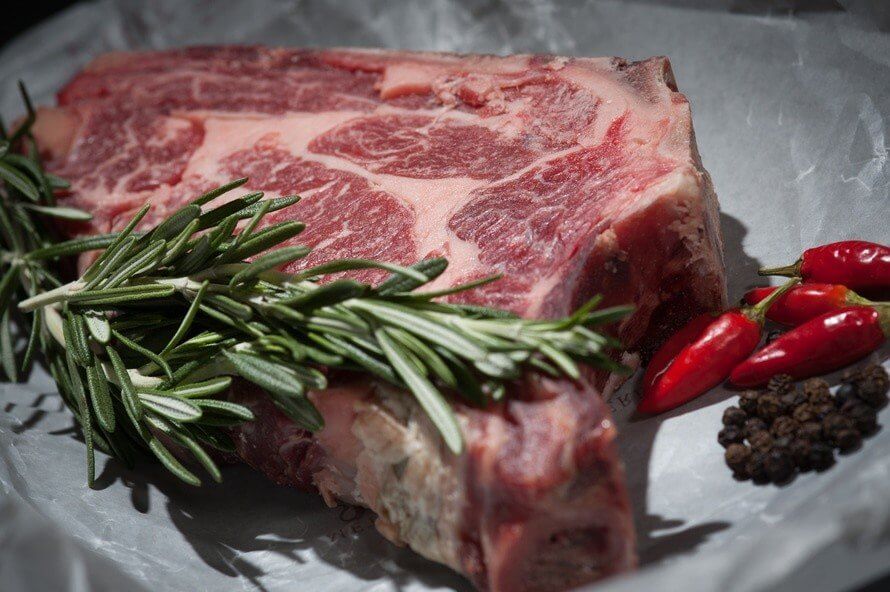
When it comes to protein options in Portland, Oregon, beef has been a longtime favorite. Yes, we have a weird bacon obsession, and sure, restaurants are often expected to have veggie burgers on the menu, but beef in all its varieties will always have its place as an essential menu item. That being said, prime cuts of beef are generally not one of the menu items that restaurant owners are making the most profit on. Fortunately, Portland wholesale distributors offer alternative cuts that have a lower price tag without sacrificing taste, freshness, and quality. These other cuts are often called butcher’s meat, because butchers tend to take them home instead of selling them. They don’t come in custom cut portions, but can easily be portioned when you cook them or pre-portioned and stored.
Whether you operate a high-end steakhouse, a mom & pop restaurant, or a food cart, incorporating these cuts is a great way to increase the profitability of each dish, and can even give your menu a more distinct flavor profile. Let’s take a look at some of these options:
Hanger Steaks
So-called because it hangs off the cow’s diaphragm, hanger steaks are similar to other cuts from the plate section. Also called ‘the butcher’s secret’, hanger steaks have a strong beefy taste with a distinct minerality and slight livery edge. They are small cuts with a triangular cross-section and loose texture that marinates well and handles high temperatures nicely when cooking.
Skirt Steaks
The diaphragm muscle of the cow is called the skirt, and when cut from the plate and flank you have long, grainy meat that is traditionally used in fajitas. Skirt steak has a rich, buttery flavor due to its nice fatty marbling. It’s a thin cut, so high temperatures are best or else it gets too chewy. Besides fajitas, skirt steak is used to make the Cuban dish, ropa vieja, “old rope”, which pulls apart into delicious strands of meat.
Beef Short Ribs
Whereas rib steaks are cut from the back downward, beef short ribs are cut from the ribcage closer to the belly. They come as ‘English cuts’, 6 to 8-inch long slabs, or ‘flanken style’, sliced across the bone with four or so short sections of bone per slice. Short ribs have a wonderful marble and rich taste. They resemble the flavor profile of the ribeye cap, which is arguably the most delicious part of a ribeye steak, but at a quarter of the cost.
Flap Meat
Called bavette in France and sirloin tip in New England, flap meat looks very similar to skirt steak. Flap meat comes from the bottom of the sirloin, from where the tri-tip is also cut, and has a course grain and mushy texture when raw or rare. Cut it close to the grain to minimize toughness and cook it to at least medium-rare due to the soft texture for a sweet, slightly livery taste with a classic beefy flavor and mineral overtones.
Tri-Tip
This triangular cut comes from the muscle group in the lower sirloin that controls the steer’s back legs. It’s popular in Santa Maria, California, where they cook it over red oak wood, and is thus often called the Santa Maria steak. It has a rather mild taste and a very lean, juicy texture, with a fat cap on one side that can be removed or left on for extra flavor. Because of the tapered shape, the smaller end will be well done or medium-well when the rest of the steak is medium-rare, making for some really interesting dish possibilities.
Teres Major Steak
This small muscle is cut from the shoulder blade, averages about 8 to 12 ounces, and is very tender, making it a much cheaper alternative to the tenderloin. Pan-sear it for a traditional flat iron steak or roast it in the oven, either whole or in medallions. You’ll see it also labeled as shoulder tender, beef shoulder, petite tender, or bistro filet.
Check with a Portland Restaurant Supply like McDonald’s Wholesale Co. for these beef cuts to maximize the profitability of your dishes and explore some of the hidden flavors that our Oregon cows have to offer.

